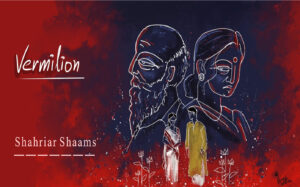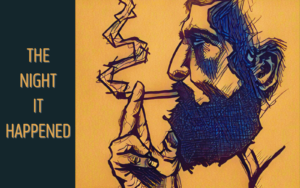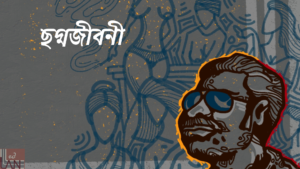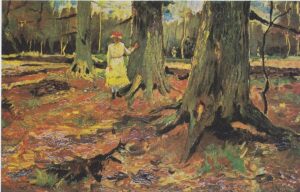Alfred Hitchcock’s Psycho (1960) is the story of Marion Crane (Janet Leigh), an office secretary, who steals forty thousand dollars from her employer’s client, runs away from Phoenix, Arizona, to meet her boyfriend at Fairvale, stops at a roadside motel and gets murdered by its owner, a psychotic killer, Norman Bates (Anthony Perkins), who had also killed and stuffed his own mother. Critics dismissed the plot as trivial; Paramount was skeptical about the project, and the prevalent Hayes Code did not approve of the nudity and scatological references in the film. Hitchcock, nevertheless, took the plunge. He produced the film with Paramount having a forty percent share. The film was made on a shoe-string budget with only Bernard Herrmann (music director) and Saul Bass (title designer) as expensive recruits. It was shot in black and white with his television crew and the entire shooting was completed in forty-two days.
The film proved to be a huge commercial success as it grossed over three times its production cost. Hitchcock became one of the most powerful and successful filmmakers in Hollywood, and Psycho introduced a new genre in Hollywood – the slashers. The film became a cult creation with its infamous shower scene replicated by other filmmakers to date. The slashing of Marion Crane is something that Hollywood had not witnessed before. It was sudden, it was brutal and it was audacious as Hitchcock had killed off his leading lady with more than half of the film’s screen time remaining. These bold steps of Hitchcock perhaps shifted our attention away from another significant character of the film – Mrs. Bates or Norma Bates, Norman Bates’ mother. Mrs. Bates is a taxidermized corpse killed and preserved by her own son who suffers an overidentification with his mother so much so that he kills attractive young women in her name. And Psycho, largely due to Mrs. Bates, becomes one of the iconic Body Horrors in Hollywood.
Alfred Hitchcock, well-known for his fascination of filming fear, never uses overtly grotesque bodies to represent horror on screen. He manages to bring out the grotesque in ordinary bodies. He ekes out the unfamiliar from familiar bodies while escorting the entire film into the realm of the uncanny. We do not find a sleepwalking zombie of The Cabinet of Dr Caligari or a vampire of Nosferatu in Hitchcock. Instead, in his most scary film, we find an old frail sick woman who kills posthumously. Hitchcock, perhaps for the first time in mainstream narrative cinema, projects an amalgamation of the human and the nonhuman in the body of a woman. Mrs. Bates is a perfect “recipe” of an abject body – a corpse that by virtue of being taxidermized also embodies the “devalued” aspects of the non-human. Being a woman, being dead, and being “stuffed” (like a beast or a bird), Norma Bates assimilates in her body the abjection of speciesism and sexism.
While speaking of the Gothic elements in Psycho, critics pay a lot of attention to the menacing Bates mansion, the deranged mother, the dark and stormy night, and the abundance of secrets. However, the most obvious of his Gothic motifs – violent physical reconstitution and corporeal preservation in the form of taxidermy – are surprisingly missing in such readings. Jane Eastoe in The Art of Taxidermy (2012) states:
The skin, our largest organ, is the frontier between the inside and the outside of our bodies. It is one of our chief defining factors and yet it is unique; the pigmentation, the texture, the genetic characteristics, the hair, the fur, the freckles or the feathers mark out each species, each family, and indeed each individual creature. Skin is valuable; it is eaten, worn, upholstered and fetishistic. It is the raw material of taxidermy.
This “raw material” and its “value” that Eastoe speaks of have been exploited by Body Horrors for decades. Films like Jonathan Demme’s The Silence of the Lambs (1991), Gyorgy Palfi’s Taxidermia (2006), Terry Gilliam’s Tideland (2005), Tom Tykwer’s Perfume: The Story of a Murderer (2006), Pedro Almodovar’s The Skin I Live In (2011) are a few significant instances. In fact, Buffalo Bill and Hannibal Lector in The Silence of the Lambs use human skin in each and every way as described by Eastoe: it is ingested, worn, upholstered and fetishized.
However, the first film which had actually brought out blatantly the chilling aspects of this raw material way before The Silence of the Lambs is Psycho, a film based on Robert Bloch’s novel titled Psycho (1959), which in turn was inspired by the actual findings in the obscure house of a man named Ed Gein at Wisconsin. The story (or the actual event) runs thus: after the mysterious disappearance of a local woman, investigators searched the house of Ed Gein and discovered
[a] human skin purse and bracelets … A tom-tom rigged from a quart can with skin stretched across the top and bottom … The eviscerated skins of four women’s faces, rouged, made-up, and thumbtacked to the wall at eye level … A rolled-up pair of leggings and skin “vest”, including the mammaries, severed from another unfortunate (The Making of Psycho, Rebello, 1990: Loc. 208- 213).
Ed Gein, the creator of this carnal nightmare had used skin in wide-ranging ways to create his own kind of taxidermy of the female anatomy.
The term “taxidermy” is derived from the Greek words “taxis” (arrangement) and “derma” (skin). Thus, taxidermy may be defined as the arrangement (or rearrangement) of skin on a manikin to produce life-like replicas of a body that straddles the world of the dead and the alive, the beautiful and the grotesque. 1950s and 1960s were a time when taxidermy was a marginal art. Concern for animal rights, wild life preservation laws and a clear shift in cultural response to taxidermy had already begun to see the art as grotesque minds’ propensity to create grotesque bodies. Yet two mainstream Hollywood films used taxidermy in 1956 and 1960. They were Alfred Hitchcock’s The Man Who Knew Too Much (1956) and Psycho.
While Benjamin McKenna (James Stewart) steps into a taxidermist’s shop in The Man Who Knew Too Much by mistake and gets his hand stuck in the jaws of a snarling tiger making the viewers laugh at the absurdity of the situation, taxidermy in Psycho becomes a more menacing discourse. In fact, taxidermy contains the crux of the mystery in the film. Incidentally, post-Psycho, America witnessed a revival of interest in taxidermy. From workshops, training institutes, taxidermy schools, to competitions being arranged at various centers of the world, the art is no longer labelled as “kitschy” as it used to be during the mid-twentieth century. Whether Psycho (1960), and the novel on which the film is based, and the real story of Ed Gein were, in some morbid way, instrumental in reviving interest in this almost-dead art is debatable. But the acute interest stirred by the news of the body parts and skin found in the Wisconsin murders, the immense popularity of Bloch’s body horror Psycho and the huge success of Hitchcock’s thriller, does in fact shed light on contemporary viewer’s/ reader’s craving for the sensational and the corporeal. Joseph Smith reports: “During the days and weeks following the gruesome discoveries in Gein’s home, police stood guard on the house around the clock “to discourage curiosity seekers, including groups of fraternity boys from the University of Wisconsin bent on throwing beer parties in the infamous ‘house of horror’”. Carloads of rubber-neckers poured through the town—perhaps as many as 4,000 families just on the Sunday following Gein’s arrest. A few months later, a crowd of 20,000 descended on Plainfield when Gein’s property was opened to the public before its sale by auction. But by then, there wasn’t much to see; only three days earlier, the Gein house had burned to the ground, probably torched by local residents irritated over the hordes of gawkers—and by their town’s sullied reputation.” (The Psycho Files: A Comprehensive Guide to Hitchcock’s Classic Shocker, Smith, 2009: 11)Psycho may have fuelled the viewers’ curiosity about bodies being spliced open and then re-created. In this light, the popularity of Psycho and the series of slasher films (that fed on female flesh) it spawned brings forth the possibility that contemporary interest in corporeality was reviving. Or perhaps the interest was always there and Psycho had simply removed the skin of genteel restraint.
It is noteworthy that taxidermy was a significant part of Victorian “thing” culture. “Stuffed” exhibits adorned pubs, roadside inns, private parlours and drawing rooms of Victorian homes. From hummingbirds to Arctic bears taxidermy specimens evoked a sense of beauty, nostalgia for a lost world, and uneasiness. Taxidermy installations had become sites of longing as well as concrete testaments of conquest and power. But the urge of experiencing animal exotica was older than the Victorian age.
The shores of 16th century Europe witnessed a surge of outlandish creatures brought home from unknown lands. Bits and pieces of unusual creatures were gleaned from the Americas and brought home by voyagers. Such body parts of mysterious animals ultimately landed in the curiosity cabinets of European nature enthusiasts and personal collectors. The incomplete pieces of animal anatomy housed in curiosity cabinets seethed with veiled knowledge as out of such small tokens whole new worlds were envisaged. Rather than providing the viewer the complete satiation of knowledge, they lured her further into the labyrinths of the unknown. Such curious specimens became metonymic representations of a tantalising world yet to be discovered. They offered the collectors a brief glimpse of a “might-have-been” possession.
By the 18th century (the age of Enlightenment), such incomplete sources of knowledge ceased to captivate the popular imagination. The British Museum that opened in 1753 became home to Hans Sloane’s huge collection of curiosities (19,290 animal specimens, according to Melissa Milgrom). But gradually such collections became obsolete and were even regarded as flatly grotesque by the end of the century and were gradually taken over by natural specimens. Taxidermized re-creations of the 18th century concentrated on a dramatic capturing of the mood, carriage and attitudes of the once-alive creatures. There was no place for the anomalous or the grotesque.
The onslaught of the Industrial Revolution and a consequent disjunction of humans from the natural world led nineteenth-century Europe more fervently towards amassing, reviewing and appreciating specimens of nature. Rachel Poliquin in The Breathless Zoo (2012) informs: “Taxidermy was everywhere, from the conservatories of the wealthiest patrons to the market stalls, and everywhere in between” (Loc 1431). Nineteenth-century taxidermy was exonerated from the guilt that usually accompanies destruction. It was, at that time, seen as a marker for reverence of nature.
The nineteenth century witnessed an unprecedented proliferation of taxidermy creations by nature enthusiasts. Walter Potter’s (1835 – 1918) anthropomorphic museum of curiosities, Hermann Ploucquet’s (1816 – 1878) anti-naturalistic tableaus, and Charles Waterton’s (1782 – 1865) use of taxidermy as a trenchant attack on contemporary politics all flourished during the nineteenth century. In many such exhibitions animal re- creations were made to “ape” human actions. We have rabbits in a classroom, kittens attending a wedding, and rats drinking tea. The carcasses of the animals were dressed as humans and were displayed as participating in myths and folklores of humans, from “Reynard the Fox” to “The Death and Burial of Cock Robin”.
Significantly, the second half of the nineteenth century also witnessed the publication of Charles Darwin’s On the Origin of Species (1859) and T.H. Huxley’s On the Physical Basis of Life (1869) that brought humans and beasts to a dangerously close proximity. Further, there was a proliferation of Gothic literary texts at the time that problematize the man/animal binary. By rummaging through the myriad labyrinths of a highly complex physical constitution of the human subject, the authors of the Gothic texts obliterate the reassuring lines between familiar and unfamiliar, past and present, unity and fragmentation, progression and regression, giving birth to characters like vampires, werewolves, ape-men and beast-people, perching on the precarious strands of fluid forms. Kelly Hurley in The Gothic Body: Sexuality, materialism, and degeneration at the fin de siècle (1996), discusses the proliferation of “abhumans”( Kelly Hurley borrows the term “abhumans” from William Hodgson to describe the human bodies that at the turn of the century destabilised the idea of human normativity (1996: 3). The term may also be applied to all those anthropomorphic taxidermy animal forms that are made to imitate humans as they mimic human postures and participate in human narratives.) that populate the British Gothic narratives at the turn of the century: The Hunting of the ‘Soko’ (1881), The Strange Case of Dr Jekyll and Mr. Hyde (1886), The Weapons of Mystery (1890), The Great God Pan (1894), The Island of Dr Moreau (1896), Dracula (1897), The Beetle (1897) and many more.
This intermingling of dead/ alive and animal/ human bring forth the idea of the permeability of the living corporeal form. The irony in both taxidermy and the gothic body is a desperate attempt to achieve wholeness and stability with raw materials (the skin and the body) that are themselves given to fragmentation and permeability. A taxidermist may be defined as one who searches permanence in perishable objects. He may thus be termed as “a speculator in perishables” (a phrase that Hitchcock uses to describe himself in It’s Only a Movie, Chandler, 2005: 58).
Hitchcock (born in England at the turn of the century, 1899) was heavily influenced by traces of Victorian popular culture. He was an avid reader of Victorian Gothic literature, had a taste for the macabre, and was a filmmaker who enjoyed petrifying his audience. And he was at his most creative and most prolific in a world that had been witness to two World Wars, the Holocaust, and the stifling atmosphere of the Cold War. Society was already comprised of a skeptical pessimistic mass – petrified, anxious, and lonely. Hollywood, the guardian of popular American imagination, imposed strict codes to manufacture films that had no place for blatant exhibition of instincts like sex and violence. This world of entertainment had to adhere to a make-belief world that would somehow manage to wipe off the bitter memories of systematic cruelty hurled from time to time on human bodies and minds. It also helped in assuaging the guilt of a nation that had not been involved enough until it was too late. In such a world came Psycho with a woman in her undergarments, a woman who spells out the word “bathroom”, a woman who uses the commode, and a woman who is mercilessly slashed on-screen, a slashing that was unprecedented in the history of Hollywood. There was murder, there was blood, there was violence, there was sex, there was matricide and there was grotesque corporeal preservation. In short, in Psycho, Hitchcock was at his Gothic best.
Psycho is one of the most blatant of the corporeal Gothic films in mainstream narrative cinema. It attempts to study the fluidity of human anatomy through the lens of taxidermy. The decaying body of Mrs. Bates, the deranged body of Norman Bates, and the tortured body of Marion Crane may be read as “taxidermic recreations” that reflect Hitchcock’s age-old urge to construct compliant bodies. Psycho is replete with the ideas of a body being replicated, destroyed, recreated, and redestroyed.
From using a body double for Janet Leigh in the shower scene, to the stuffed bodies of birds generously littered in the motel office, to the empty eye sockets of a long dead mother, Hitchcock seems to create his own kind of taxidermy with the body of the film. The film is breathtakingly fast-paced, with the plot thickening from the very beginning, and abruptly seeming to come to a standstill with the murder of the protagonist. Just when we completely identify with Marion, she is ruthlessly killed, much to the bewilderment of the viewers. The knife not only rips Marion apart, it also slashes the corpus of the film’s narrative, and is restored again through the shell of another character, Norman Bates, with whom we momentarily identify and then realise, much to our horror, that the shell of Norman contains the vengeful mother within. The ultimate disillusionment comes when the empty eye sockets of Mrs. Bates stare at us. Her immobility, her helplessness come home to us as we realise that we too are immobile and helpless as we watch, with a mixture of curiosity and squeamishness, the wrath of a director who creates, destroys, recreates and redestroys the viewers’ reactions by alternately filling, emptying, refilling, and then re-emptying the bodies of the major characters as well as the body of the film.
A taxidermist often uses a clay model that serves as a guiding structure for the real mount. Robert Bloch’s novel, Psycho, is the clay model on which the film is based. But Hitchcock is doing far more than being merely faithful to the plot of the original novel. Bloch treats Mary’s (Marion in Psycho) murder with much economy- a description which arouses fear but fails somehow to arouse our sympathy, let alone empathy, for the victim:
The roar [of the shower] was deafening, and the room was beginning to steam up. That’s why she didn’t hear the door open, or note the sound of footsteps. And at first, when the shower curtains parted, the steam obscured the face. Then she did see it there- just a face, peering through the curtains, hanging in midair like a mask. A head-scarf concealed the hair and the glassy eyes stared inhumanly, but it wasn’t a mask, it couldn’t be. The skin had been powdered dead-white and two hectic spots of rouge centred on the cheekbones. It wasn’t a mask. It was the face of a crazy old woman. Mary started to scream, and then the curtains parted further and a hand appeared, holding a butcher’s knife. It was the knife that, a moment later, cut off her scream. And her head
Alfred Hitchcock creates the most blood-curdling and yet the most pathetic scene in film history out of those last thirty-three words of Bloch’s novel: “Seventy separate shots in less than a minute of screen time are fused together psychologically into a continuous experience” (James Monaco, How to Read a Film, 2009: 196- 197). Those who go frame by frame through the scene may note how much is left to the imagination. We see a knife, blood, water, and a woman’s naked body (with certain parts strategically concealed from the camera) but the penetration of the blade into the flesh is not shown. We find blood, but it is definitely not a gore feast. We can see Marion screaming, but the scream is almost drowned as the slashing chords of Bernard Hermann’s soundtrack make up for a far more gruesome sound effect. The closing shots are almost poetic, as blood and water swirl down the drain, the camera cuts to a close shot of the gaping drain, and dissolves into Marion’s eyeball.
After the murder in Psycho, (unlike the novel which switches abruptly to Norman waking from a stupor in his room), Hitchcock’s camera lingers in the bathroom, exploring the aftermath of the violence. Its focus on the shower head, Marion’s legs in the tub, the course of the blood that flows towards the drain, her face pressed against the toilet floor, and her eyes staring back at us, serve to complicate our emotions: we experience a mixture of horror, disbelief and shame. The vulnerability and helplessness of a body bereft of life and open to the stark gaze of the viewer brings forth the uneasy sensation of our own lust for dreadful sights thinly disguised under a mask of shocked sympathy. The tight close shots of Marion’s naked corpse and the camera’s roving around the site of massacre, though visually comprehensible are yet perplexing to classify. Such perplexity probably arises from wondering as to what is more shocking, “the human violence […] or the idea that someone was transform[ing] these vestiges into something else” (Melissa Milgrom when she first encounters the mangled carcasses of animals at Tanzania, 2010: 4-5). While on a 14-day trek “through the most barren stretch of Tanzania” on the last night Melissa Milgrom met a group of Belgian hunters and in their camp she continues “I mistakenly wandered into the carcass room, where the hunters stored their kills. The salted pelts, hung high on pegs, were eyeless, mangled, and limp. They smelled bloody and metallic: the unmistakable stench of decay. I wasn’t sure what was more shocking: the human violence after all the tranquillity or the idea that someone was going to transform these vestiges into something else” (Loc 109). She later adds: “There’s something arresting and haunting” as well as “something morbid and kitschy about taxidermy” (Loc 139). Just the kind of feeling we have when we watch the shower scene.
What we witness is a violation of the husk, the outer covering, the hide that hides us. The wounds, the cuts, or the burns of a mutilated or dismembered body are conveyed to the viewers primarily through the ruptures on the skin. There is nothing symbolic about the skin in taxidermy; it is real. The captivating and yet perplexing power of taxidermy reside in the authenticity that the skin of the animal generates; the skin is the bearer of a “life lived” (Gregory and Purdy, 2015: n.pag.) and is ultimately transmuted into the raw material that becomes a creator’s trophy. Hitchcock uses a “torso”, a “body double”, the “hands”, “shoulders” and “head” of Janet Leigh as raw materials out of which he fleshes out one of the most effective slashings in film history.
Death is a precondition in the art of taxidermy. Samuel J. M. M. Alberti (2008) states, “the biological death of the living beast is the birth of the specimen”. Mrs. Bates had to be killed in order to be preserved. But in the case of Marion, Hitchcock reverses the process. Marion becomes a specimen, an object whose body is used as raw material to create the slashing scene even before she dies. Helen Gregory and Anthony Purdy in Present Signs, Dead Things: Indexical Authenticity and Taxidermy’s Nonabsent Animal (2015), while attempting a parallel between photography and taxidermy, speak of Emily Mayer’s sculpture, Last Resting Place (Their Death in My Hands) (2007) in the following manner:
It depicts a dead cat resting on a taxidermist’s workbench alongside tools, sketches, and a mug filled with pens and pencils and functions as a commentary on mortality and on the pet as a site of embodied memories. In this case, the cat does not appear to be sleeping; it is evidently and uncompromisingly dead, waiting for the taxidermist to perform her magic.
The shower scene in Psycho where Hitchcock “creates” the most disturbing slashing (one that has been, and is still being, recreated again and again), may be interpreted as an anticipation of the installation that Gregory and Purdy speak of. The only difference is that the task of recreation begins way before the “exhibit” is dead. It is Janet Leigh’s (the real woman who plays Marion) “head”, “shoulder” and “legs” that are being used while the “torso” is that of another model (Marli Renfro), as stated by Hitchcock himself (Hitchcock/Truffaut, 1984: 277). The dismemberment is carried out on a live body on screen. The title of Mayer’s sculpture/installation “Their Death in my Hands” thus acquires a sinister tone when applied to Hitchcock’s staging of violence on female body. The shower head, the tub, the drain, the curtains, the cold sterile walls call to mind “a taxidermist’s workbench alongside tools, sketches, and a mug filled with pens and pencils”. The dead eye of Marion, her face pressed on the bathroom floor becomes a “commentary on mortality”, the randomness of violence and a site of wasted hopes. One significant point of departure is that, unlike the cat, Marion is not “waiting for the taxidermist to perform [his or] her magic”; the magic is generated in the very process of dying. It is the enactment of pain and torture that Hitchcock preserves. Hitchcock knows that the compelling effect of the scene on the viewer would depend upon a foregrounding of the unmistakable “deadness” of the desecrated body; and all the props in the bathroom so meticulously recorded will add to the horror of this taxidermal installation.
The other significant female victim of Norman projects another side of taxidermy – that of longing and a desperate clinging to a body that is no more. Ironically, onscreen Mrs. Bates is never played by Anthony Perkins. Mrs. Bates in Psycho is a classic example of what taxidermists term as “Re-Creations”. Melissa Milgrom in Still Life (2010), while describing a hawk that is not a hawk at all, but a mixture of “turkey, chicken and goose feathers”, explains:
According to the rule book, “Re-Creations are defined as renderings which include no natural parts of the animal portrayed […] For instance, a recreation eagle could be constructed using turkey feathers, or a cow hide could be used to simulate African game (34).
Mrs. Bates in Psycho, though projected as Norman while murdering Marion and Arbogast (Martin Balsam), is actually an amalgamation of “a variety of doubles, including a female ‘Lilliputian’– Her voice is three different people’s; one was provided by a man, another by Jeanette Nolan […] In her final scene, her voice is a ‘collage’ of different voices, even within the same sentence” (Durgnat 2002:14). Thus, Mrs. Bates is not Mrs. Bates at all, neither is she her son. She is constructed through a blend of various bodies and voices; all coming together to create one of the most menacing serial killers. She is thus, as a taxidermist would describe, a “re-creation”, an “assemblage”.
Mrs. Bates’ “stuffed body” and all the other recreated assemblages of Norman vest taxidermy with qualities of “loss, memory, fragility, decay, and transformation” that Gregory and Purdy speak of. In this sense, Psycho becomes symptomatic of modern taxidermy. Mrs. Bates is not a trophy, nor is she an exhibit in the Bates diorama. Rather her body is guarded zealously by her son. She is a “nonabsent” embodiment of all that Norman dreads and yet yearns for. Thus, Mrs. Bates and Marion in 1960 already anticipate two significant shifts in modern taxidermy of the twenty-first century; while Mrs. Bates becomes a site of Norman’s lost days, Marion becomes a nondead exhibit of Hitchcock’s installation, an exhibit whose created lifelessness is displayed in a stark and literally naked form.
The uncanny presence of death in a live body is also given a concrete physical form in Norman Bates. Norman Bates suffers from such “overidentification” with his mother that the last words of Mrs. Bates proclaiming her innocence ring true. The “body” (or shell) of Mrs. Bates becomes a surrogate home for Norman as he himself takes refuge in his mother while killing innocent victims. He is that taxidermist who becomes a pathetic exhibit of his own dystopic diorama, a grotesque product of his own workshop. Consequently, Mrs. Bates becomes a repository of a number of opposites – young/old, healthy/sick, mobile/immobile, mother/son, male/female, life/death, victim/victor, guilty/innocent – myriad binaries visually rendered at the end of the film where Norman, Mrs. Bates, and the car that contains Marion blur and dissolve into one another – a “Re-Creation” indeed.
*****
Works Cited:
- Alberti, SJMM (2008). “Constructing Nature Behind the Glass.” Museum and Society6 (2): (2008): 73–97.
- Bloch, Robert. London: Orion Publishing Group, 2014. Kindle edition. Available at: www.amazon.in/Psycho-Novel-Robert-Bloch/dp/1590203356.
- Chandler, Charlotte. It’s Only a Movie: Alfred Hitchcock: A Personal Biography. New York: Simon and Schuster, 2005.
- Durgnat, Raymond. A Long Hard Look at Psycho. London: British Film Institute, 2002.
- Eastoe, Jane. The Art of Taxidermy. London: Pavilion Books, 2012.
- Gregory H and Purdy A. “Present Signs, Dead Things: Indexical Authenticity and Taxidermy’s Nonabsent Animal.” Configurations 23:1 (2015): 62 – 92. Baltimore: Johns Hopkins University Press.
- Haraway, Donna. Primate Visions: Gender, Race, and Nature in the World of Modern Science. New York: Routledge, 1989.
- Hurley, Kelly. The Gothic Body: Sexuality, Materialism, and Degeneration at the fin de siècle. Cambridge, U.K: Cambridge University Press, 1996.
- Milgrom, Melissa. Still Life: The Adventures of Taxidermy. New York: Houghton Mifflin Harcourt, 2010. Kindle edition.
- Monaco, James. How to Read a Film: Movies, Media, and Beyond. Fourth Edition. New York: Oxford University Press, 2009.
- Mondal, Subarna. “Did he smile his work to see?”—Gothicism, Alfred Hitchcock’s Psycho and the art of taxidermy. London: Palgrave Communications. 3:17044 doi: 10.1057/palcomms.2017.44.
- Poliquin, Rachel. The Breathless Zoo: Taxidermy and the Cultures of Longing. University Park, Pennsylvania: Pennsylvania State University Press, 2012.
- Rebello, Stephen. Alfred Hitchcock and the Making of Psycho. New York: Integrated Media, 1990. Kindle edition.
- Smith, Joseph W. III. The Psycho File A Comprehensive Guide to Hitchcock’s Classic Shocker. North Carolina: McFarland & Company, 2009.
- Truffaut, Francois, and Scott, Helen G. Hitchcock: The Definitive Study of Alfred Hitchcock by Francois Truffaut. New York: Simon and Schuster, 1984.
Films cited:
- Hitchcock, Alfred. The Man Who Knew Too Much. Directed by Alfred Hitchcock. New York: Paramount, 1956.
- Hitchcock, Alfred. Psycho. DVD. Directed by Alfred Hitchcock. New York: Paramount, 1960.
- Utt, Kenneth. The Silence of the Lambs. Directed by Jonathan Demme. Los Angeles: Orion Pictures, 1991.
*****
Part of this article was initially published in the journal Palgrave Communications.








